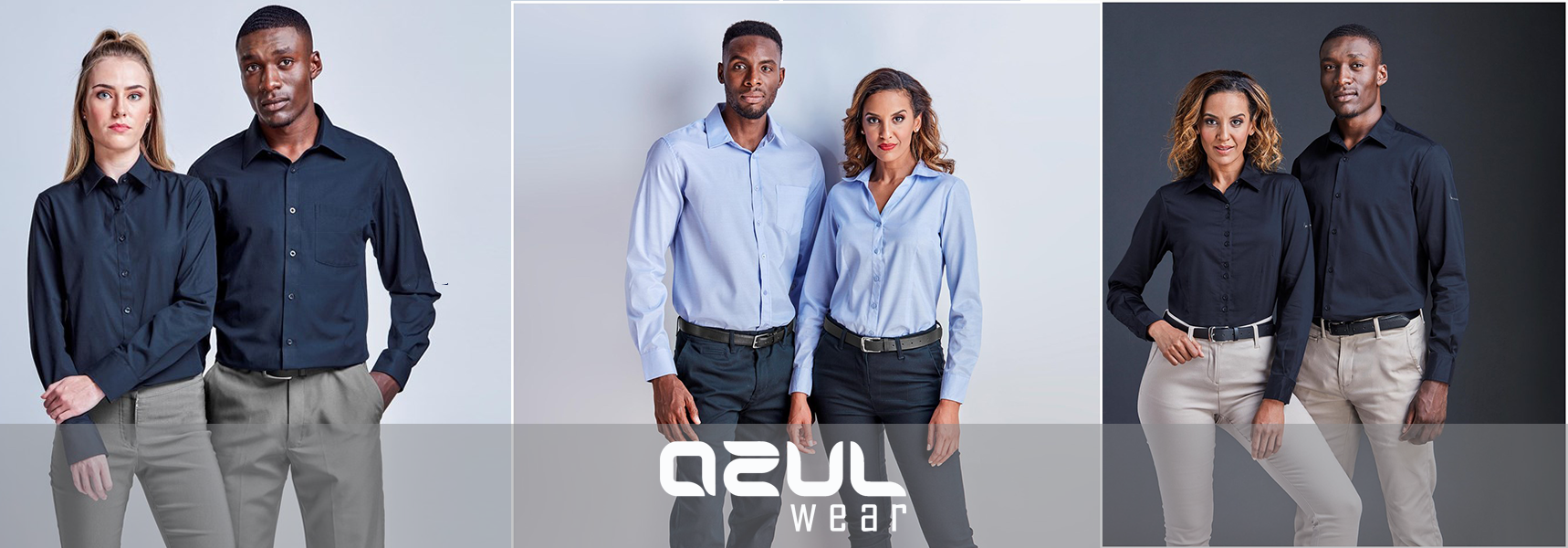Choosing Branded Clothing That Supports a Greener Wardrobe
Choosing Branded Clothing That Supports a Greener Wardrobe
Blog Article
The Value of Lasting Apparel: Just How It Impacts the Setting and Your Wardrobe
Sustainable clothes is progressively identified for its essential function in lessening the ecological effect of the rapid fashion market. By focusing on environment-friendly products and honest manufacturing techniques, it deals with pushing ecological concerns. This change not just profits the earth however likewise affects customer options, bring about an extra thoughtful approach to closet management. Understanding these characteristics elevates vital inquiries concerning fashion's future and individual responsibility in shaping it.
The Ecological Footprint of Fast Style

Advantages of Lasting Materials
Sustainable products use substantial benefits, specifically via environment-friendly fabric selections that minimize environmental harm. These products additionally show longevity and long life, lowering the requirement for constant replacements. Consequently, they add to an extra sustainable fashion industry and advertise responsible customer behavior.
Eco-Friendly Fabric Options
While the apparel industry has long been connected with fast fads and environmental harm, the surge of environment-friendly fabric selections offers a transformative chance. Sustainable materials such as organic cotton, hemp, and Tencel have obtained appeal due to their lower environmental effect. These fabrics are usually generated without hazardous chemicals and call for less water, reducing their carbon footprint - Branded Clothing. Furthermore, numerous environmentally friendly textiles are biodegradable, adding to a circular economy by decreasing waste. Choosing lasting materials not only supports ecologically accountable practices however also promotes much healthier environments. As consumers end up being more knowledgeable about their purchasing power, the need for green fabrics encourages brands to introduce and adopt more sustainable production methods, eventually benefiting the planet and future generations
Sturdiness and Longevity Benefits
Lots of customers are increasingly recognizing the longevity and durability advantages of sustainable products in their garments options. Unlike conventional materials, sustainable products such as organic cotton, hemp, and recycled polyester are crafted to withstand deterioration, causing garments that last longer. This decreased frequency of replacement not only conserves customers cash with time yet also reduces waste generated by fast style. On top of that, lasting clothing usually utilizes eco-friendly manufacturing approaches that enhance textile toughness, adding to a reduction in the general carbon footprint. By purchasing durable garments, customers can cultivate a more lasting wardrobe while delighting in high-quality items that keep their visual and functionality in time. Subsequently, durability and long life stand as crucial benefits of picking lasting materials.
Lowering Waste Through Sustainable Practices
Reducing waste in the fashion market can be accomplished via ingenious practices such as upcycling and repurposing materials. Furthermore, embracing minimalist wardrobe strategies encourages consumers to focus on quality over quantity, ultimately decreasing clothes consumption. With each other, these approaches contribute considerably to a much more sustainable garments model.
Upcycling and Repurposing Products
Upcycling and repurposing products have actually become innovative strategies in the style market, transforming thrown out textiles right into valuable brand-new products. This method not just decreases waste yet additionally motivates imagination and individuality in apparel design. By taking old garments and materials, designers can develop distinct pieces that mirror personal style while decreasing the need for new resources. Additionally, upcycling typically requires much less power and water contrasted to typical production procedures, considerably decreasing the ecological impact of style. As consumers become much more familiar with sustainability, the appeal of upcycled apparel remains to rise, advertising a circular economic situation. Eventually, these techniques add to an extra lasting future, where style prioritizes ecological health and wellness over quick production and usage.

Minimalist Closet Techniques
As individuals increasingly look for to decrease their ecological effect, taking on minimal closet approaches has actually gained grip as an effective strategy to lasting fashion. These strategies stress top quality over quantity, encouraging customers to curate a smaller collection of functional, resilient apparel. By concentrating on classic pieces that can be combined and matched, people can lower the frequency of purchases and ultimately reduce waste.Additionally, minimalism advertises mindful intake, urging buyers to review the ethical and environmental implications of their choices. This strategy not just fosters an extra lasting way of life yet also simplifies everyday decision-making relating to attire. As individuals accept minimalist principles, they contribute to a fashion society that values sustainability and responsible consumerism, eventually causing an extra eco-conscious society.
The Duty of Ethical Labor in Sustainable Fashion
While several consumers are increasingly mindful of the ecological repercussions of their clothing options, the significance of honest labor practices in sustainable fashion can not be neglected. Ethical labor encompasses fair incomes, safe working conditions, and respect for employees' legal rights, developing the foundation of accountable fashion manufacturing. Brands that focus on honest labor not only boost communities yet also set a standard for accountability in the industry.Moreover, the integration of moral methods fosters transparency, enabling consumers to make enlightened choices concerning their purchases. This method contrasts sharply with quick fashion's unscrupulous labor versions, which usually focus on profit over people. By sustaining companies devoted to moral labor, consumers contribute to a system that values human self-respect along with ecological sustainability. Moral labor is not simply an add-on; it is essential to the more comprehensive objective of sustainable style, guaranteeing that the quest for eco-friendliness does not come at the cost of human civil liberties.
The Impact of Lasting Clothes on Carbon Emissions
Sustainable garments has learn this here now the prospective to considerably reduce carbon emissions related to the style sector. Standard garment manufacturing contributes especially to greenhouse gas exhausts, mostly due to energy-intensive production procedures and using non-renewable resources. In contrast, sustainable style concentrates on environment-friendly products, such as organic cotton or recycled fibers, which frequently need much less power to produce.Moreover, sustainable brand names often tend to take on more effective production methods, minimizing waste and reducing total discharges. By focusing on longevity and ageless style, lasting apparel encourages consumers to acquire less regularly, further minimizing the carbon footprint related to overconsumption.Additionally, many lasting brands are devoted to transparency in their supply chains, making it possible for consumers to make enlightened selections that straighten with their worths. Ultimately, changing in the direction of lasting garments can lead to a substantial reduction in carbon emissions, adding to a much healthier planet and a more lasting future for the fashion business.
Supporting Local Economies With Sustainable Selections
The change towards sustainable apparel not only addresses environmental worries yet additionally considerably benefits neighborhood economic climates. By selecting lasting fashion, consumers often sustain neighborhood artisans and small services, enhancing community resilience. These business generally operate a smaller sized range, focusing on workmanship and ethical practices over mass production.Investing in locally made sustainable clothes promotes job creation and promotes economic growth within areas. As customers come to be more knowledgeable about the ecological influence of their acquisitions, they significantly look for items that show their values. This demand encourages local manufacturers to take on sustainable methods, adding to a circular economy.Moreover, sustaining neighborhood services decreases transport exhausts, straightening with eco-conscious customer behavior. The interconnectedness of sustainable apparel and local economic climates emphasizes the crucial function that specific selections play in promoting both environmental and economic wellness. By promoting these local links, areas can grow while additionally working towards an extra lasting future.
Transforming Your Closet: Tips for a Sustainable Closet
As individuals look for to decrease their ecological influence, changing a wardrobe right into a lasting wardrobe becomes an important action. One reliable strategy is to evaluate existing apparel, maintaining only things that are used routinely and that align with sustainability goals. Focusing on high quality over amount is vital; buying sturdy items from eco-friendly brands can significantly reduce waste.Additionally, including pre-owned things can rejuvenate a closet while minimizing environmental damage. Organizing clothing swaps with close friends or contributing extra things can even more promote sustainability.When purchasing, people must seek products that are natural, recycled, or naturally degradable, and prevent rapid style retailers - Branded Clothing. Finally, exercising mindful intake by attentively taking into consideration each acquisition can add to a more lasting lifestyle. By executing these ideas, one can produce a closet that mirrors personal design while supporting ecological stewardship
Frequently Asked Inquiries
Exactly How Can I Identify Lasting Apparel Brands?
To recognize sustainable clothes brand names, one should look into products utilized, check for certifications like Fair Profession, and check out the brand name's click site openness concerning their production processes, labor methods, and ecological effect, making certain green and ethical practices are focused on.
What Are the Prices Linked With Lasting Fashion?
The costs associated with sustainable fashion can vary significantly. Higher production expenses, moral sourcing, and eco-friendly products usually cause enhanced retail costs, which might prevent some customers while interesting environmentally conscious buyers.
Can Lasting Apparel Be Trendy and Trendy?
Lasting clothing can without a doubt be trendy and stylish. Developers significantly focus on cutting-edge products and honest production techniques, confirming that style and sustainability can coexist. Customers currently have diverse options that blend appearances with ecological consciousness.
Just How Does Laundering Garments Affect Their Sustainability?
Washing clothes considerably impacts sustainability by consuming water and energy, adding to contamination, and creating microplastic release. Regular washing can break down fabrics, shortening their lifespan and raising the requirement for substitutes, ultimately intensifying environmental issues.
What Is the Life Expectancy of Lasting Apparel Contrasted to Quick Style?
The lifespan of lasting clothing normally exceeds that of rapid style items, typically enduring a number of years see this page because of top quality products and workmanship. On the other hand, quick style garments may degrade rapidly, necessitating more regular replacements. Lasting garments is significantly acknowledged for its essential function in minimizing the environmental impact of the quick style market. While several customers are progressively mindful of the environmental effects of their garments choices, the significance of honest labor techniques in lasting style can not be forgotten. Branded Clothing. Lasting clothing has the possible to considerably lower carbon discharges connected with the style sector. In contrast, sustainable style focuses on eco-friendly materials, such as natural cotton or recycled fibers, which typically need much less energy to produce.Moreover, sustainable brand names often tend to adopt a lot more efficient production methods, decreasing waste and lowering total discharges. By prioritizing resilience and timeless design, lasting garments motivates customers to acquire less frequently, additional minimizing the carbon impact associated with overconsumption.Additionally, several sustainable brand names are dedicated to openness in their supply chains, allowing consumers to make enlightened selections that line up with their values
Report this page